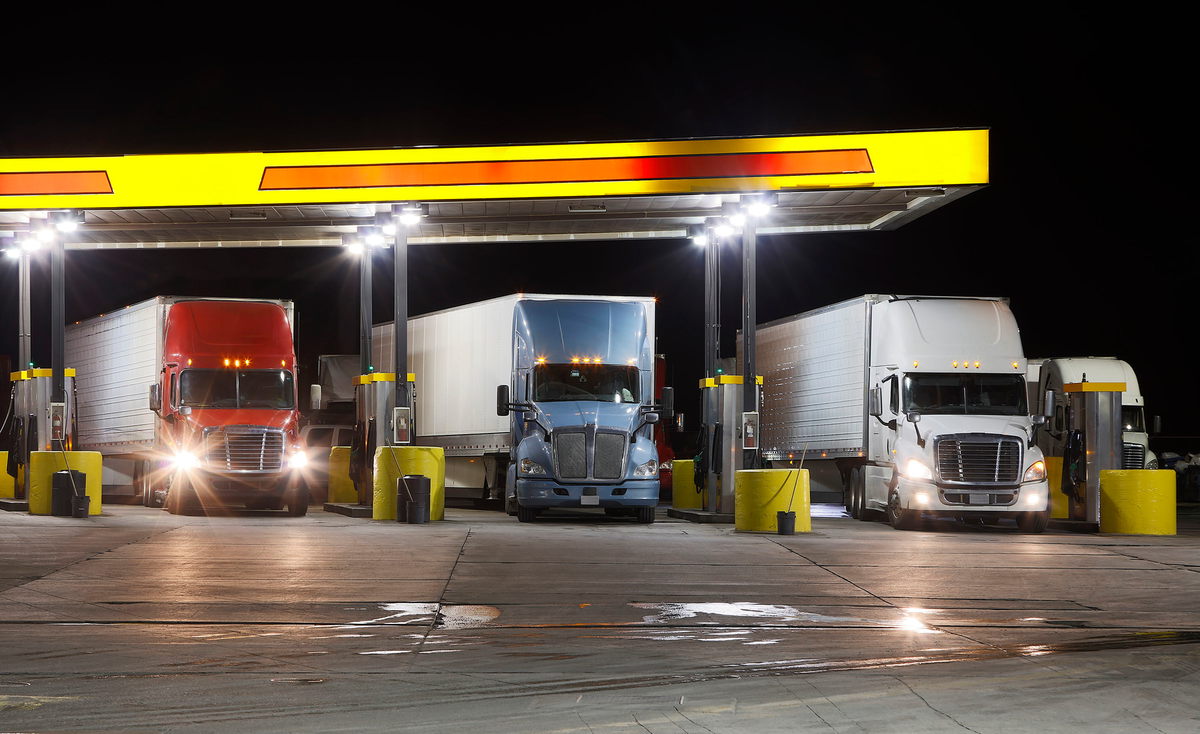Foodservice industries across America are still hurting from the country’s pandemic-related truck driver shortage.
California’s Central Valley is at the center of the issue: Farmers need to find truck drivers to haul their crops, but the time-sensitive nature of perishable goods presents an urgent challenge that has yet to be solved.
Mark Allen, the President and CEO of the International Foodservice Distributors Association (IFDA), told The Sun that the time sensitivity that farmers face has only been exacerbated with the truck driver shortage.
“You’ve got products that are highly perishable, so it’s not like pallets of clothing – you can’t find a way to move it via truck, it can sit there for two weeks and that clothing is still fine,” Allen said.
“You can’t have romaine lettuce or tomatoes or onions or apples sitting there for two weeks waiting to move to market. That’s got to happen in a pretty tight, coordinated fashion.”
Just how bad is the trucking shortage across the nation’s foodservice industry?
“There’s not a distributor in America that doesn’t have openings for drivers,” Allen said.
The IFDA has about 131,000 drivers and needs around 17,000 more just to keep up with existing demand.
On average, 450,000 commercial truck drivers will be trained every year in the United States. Last year, only about 180,000 new drivers entered the workforce, Allen said.
In a recent survey, every single IFDA member that was asked reported that it is “extremely difficult” to fill open driver and warehouse positions, and 97 percent of respondents said their job openings have remained open much longer than before the pandemic.
With the current supply of truck drivers not coming close to meeting the demand, consumer prices have naturally risen.
Food inflation is hovering around 4.7 percent, over double what it’s been in the last decade, Allen said.
Allen is hopeful that the inflation comes back down to normal levels by the end of the year.
But in the meantime, Central Valley farmers are dealing with higher freight prices since the vast majority of their products are shipped by trucks instead of trains.
“They’re seeing their freight rates going up, and for most agricultural commodities, they tend to be low-margin businesses. They’ve got to find a way to either absorb it, or they’ve got to pass it on to their customer,” Allen said.
“My guess is they’re doing everything they can to pass it on to their customer so they can maintain their margin and buy the seeds and fertilizer and everything they need to do to get crops in the ground for next year and ensure they’re financially viable. It is stressing the system, there is no doubt about it.”
How did the shortage get so bad?
Allen pointed to a variety of factors all related to the pandemic: child care issues, health care issues, expanded unemployment benefits, the number of young adults choosing to attend college, as well as the 21-year-old age requirement to drive a truck across state lines.
“Certainly the expanded unemployment benefits that the federal government is paying people, we think it’s kept a lot of people on the sideline,” Allen said. “What we have seen is in the states where those expanded benefits have been eliminated or turned into a bonus, it’s brought people back into the workforce. Those states seem to be doing a little bit better from a driver standpoint.”
As those unemployment benefits continue to dry up, Allen expects the shortage to eventually come to an end as more people come back to the workforce and pursue a career that does not have a high barrier of entry.
“Driving is one of those great career opportunities that you don’t necessarily need a college degree to do. In our industry – foodservice distribution for example – average wages for a driver are about $72,000 a year, doesn’t require a college degree, doesn’t require potential debt that comes with acquiring that college degree,” Allen said.
“So we spent a lot of time talking to people about the industry, the opportunities and the fact that it’s really not a bad career choice. It comes with full benefits, retirement benefits, health insurance and all the other things that a lot of people have become accustomed to, so it can be a great option for the right type of person.”
One major factor that Allen hopes will help end the shortage is the DRIVE Safe Act, which was introduced into the Senate by Todd Young (R–Indiana) in March and has bipartisan support.
If passed, it would allow 18-year-olds to cross state lines once they receive their Commercial Driver’s License. As part of the program, drivers must complete 400 hours of on-duty time and 240 hours of driving time in the cab with an experienced driver.
Drivers would also train in trucks that have updated safety technology, such as braking collision mitigation systems.
“Most importantly it would allow companies to go in and start to talk to younger people about driving as a profession. Today the opportunities are fairly limited because they can’t cross state boundaries,” Allen said.
“But there are more opportunities to drive interstate depending on the type of product in the back of the vehicle or depending on the route. So getting in and being able to talk to the right type of safety-minded younger people would be – we think – a great benefit to the industry and trucking and American consumers ultimately as freight rates would come in check.”











